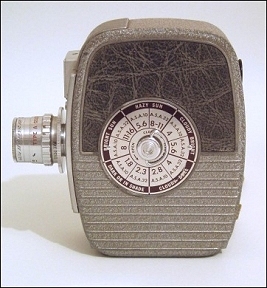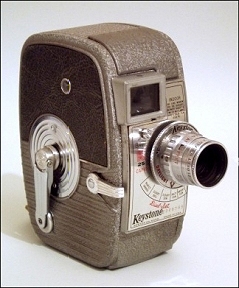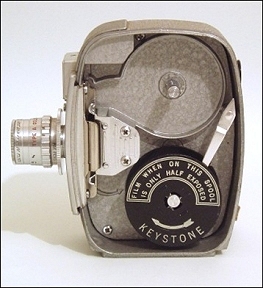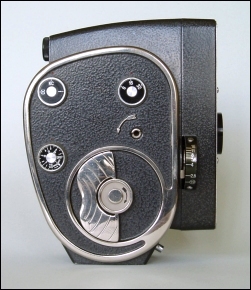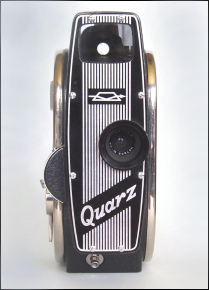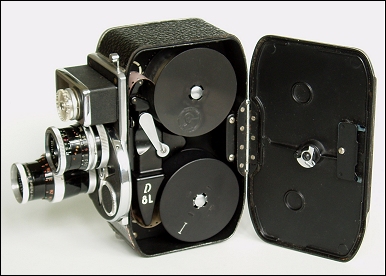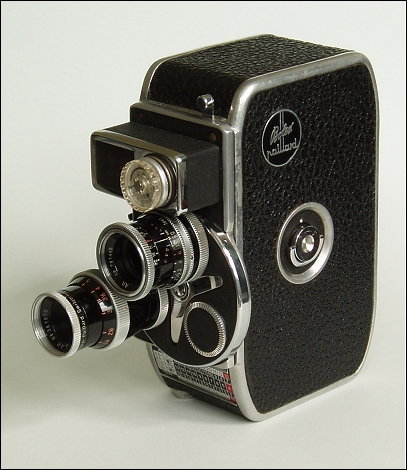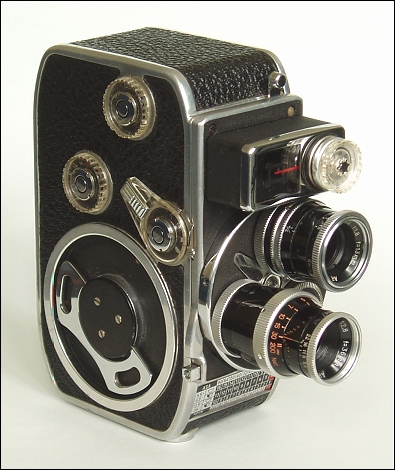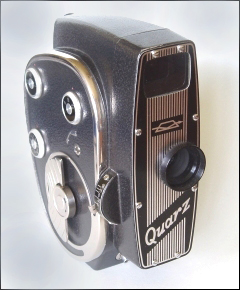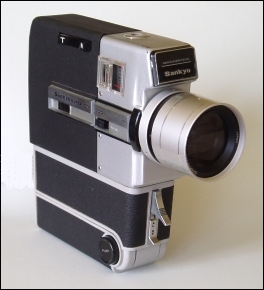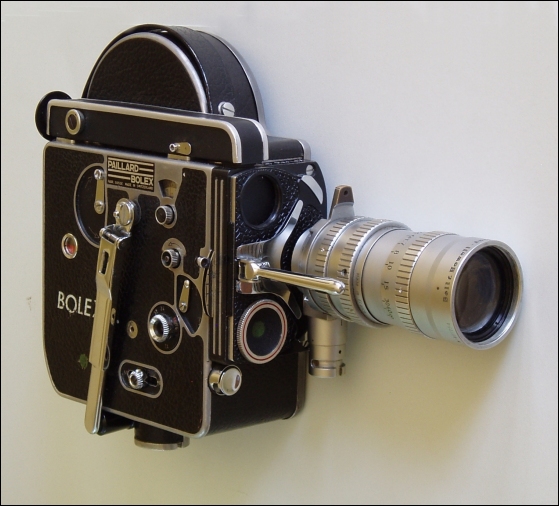Although this
camera was probably designed for the serious 'amateur' it nevertheless
has the hallmark of beautiful Swiss engineering, very similar to their
16mm cameras. The Swiss are renowned for their precision
engineering (think watches !) and Bolex Paillard certainly reflect this
in their cameras. This camera uses double run standard 8mm film
and is clockwork driven giving about 40 seconds of filming per wind.

Keystone Standard
8mm K25 Capri
Circa 1960.
Clockwork motor giving about 45 seconds of shooting time per wind.
Interchangeable screw-fit lenses. This model is fitted with a Keystone
Elgest f1.9 lens with a focal length of 1/2 inch which, for an 8mm camera,
was regarded as a standard lens.
The
take-up spool is shown in the right hand picture. Standard 8mm film was in
fact 16mm wide with twice as many sprocket holes as standard 16. A single
run though the camera (about 2 minutes) exposed one half (lengthwise) of the
film. The side plate was then removed in subdued light and the reels
reversed to expose the second two minutes on the other half. After
processing (usually by Kodak at Hemel Hempstead) the films were slit
lengthwise, spliced together giving 50 feet of film and returned within a
week ready for projection.
Quarz Standard 8mm
Although this
camera was sold relatively cheaply it is, like most Russian cameras, solidly
built. As well as the usual 16 frames per second it can also shoot at
8 fps and 32 fps. The motor can be set to run continuously or the
shutter released one frame at a time for time lapse photography or
animation.
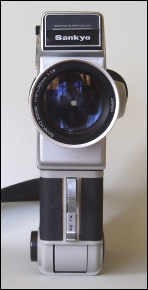
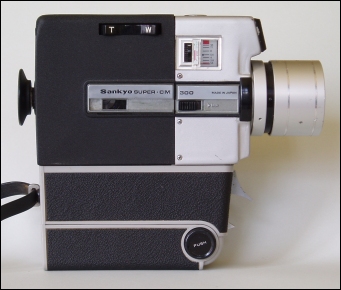
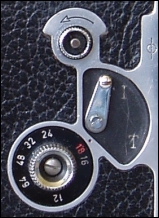
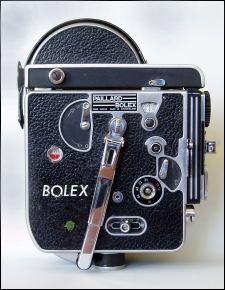
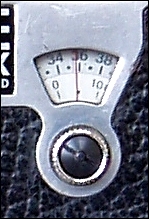




Bolex Paillard
are noted for their excellent 16mm film cameras and it was in 1946 when they
introduced the first of their compact 8mm designs, the L8, with a single
fixed-focus lens. Over the years this design has evolved through their
twin-turret B8SL to this triple-turret model. The serial number on the
base of this particular camera indicates that it was manufactured in late
1959.
This example is
fitted with two YVAR lenses, a 13mm f1.8 standard and a 36mm f2.8 telephoto.
Both are D-mount and interchangeable. The third lens position, which
could be used to mount a wide angle lens, is fitted with a threaded cover
which also acts as a turret lock (not that this should be needed in
such a robust design, except maybe in transit).
The normal
frame-speed for this camera is 16 frames per second but there is provision
for speeds between 12 and 64 fps for slow/high speed photography.
Single-frame for animation is also an option. The shutter speed can
also be adjusted independently of aperture which enables effects such as
fade-ins and fade-outs. A third control on the side of the camera
limits the viewfinders field of view depending on the focal length of the lens being
used. This is calibrated 12.5 (normal), 25 (portrait) and 36
(telephoto). A clip-on accessory to the viewfinder was available for
use with a wide angle lens.
An onboard
exposure meter is fitted with 'through-the-lens' metering activated by
depressing a lever above the viewfinder which positions a small sensor
behind the lens. This sensor is automatically retracted when the
shutter release is pressed.

for the 'Bolex
Collectors' website

This
semi-professional camera was made in Switzerland in the late 1950's.
Until the introduction of small lightweight video cameras the Bolex 16mm
film camera was a favorite with television news companies and for shooting
outdoor scenes for drama. This particular camera was originally
in use at the BBC's Natural History Unit in Bristol.
The camera would
normally be fitted with three lenses, a wide, normal and telephoto, mounted
on a turret. This camera is shown with a Bell & Howell 17-68 mm zoom
lens fitted.
Seven film speeds
are offered ranging from 12 fps to 64 fps together with single frame
capability which makes this camera ideal for serious stop-motion and animation work.
With side
plate removed showing film gate
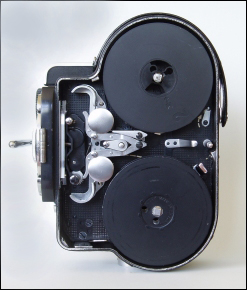
Bolex H16
fitted with a Bell & Howell 17 - 68 mm zoom lens
Kodachrome ll colour films were priced at about £4 in 1960 (£1 per minute)
making it rather expensive compared with video footage of today. The 'lever'
on the right hand side was a mechanical means of determining how many feet
were left before the film came to on end.
Circa early 60's
of Russian manufacture. Clockwork motor and a fixed f1.9 / 12.5mm
focal length lens.
Circa late1970's.
Fitted with an electric motor driven by four 'AA' size cells housed in the
foldable handle. It has a single speed of 16 frames per second and
automatic exposure which can be manually overridden and set with a small
thumbwheel next to the aperture indication window. The lens is a
Sankyo zoom 9-30mm f1.8 electrically operated with a telephoto/wide rocker
switch mounted on the side of the camera.
The camera used
drop-in super 8 cassettes containing 50 feet of film which gave
approximately four minutes worth of filming.
